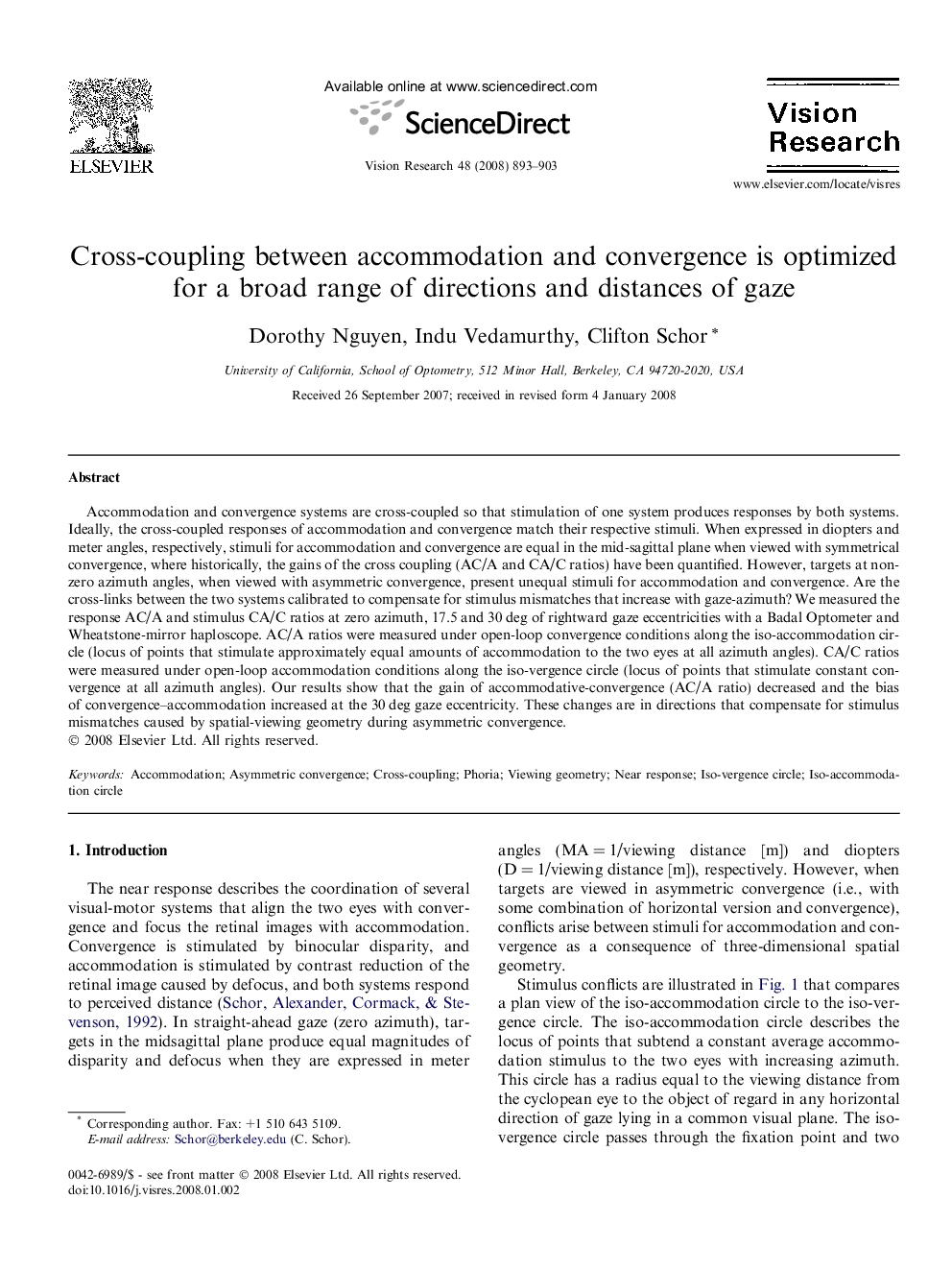| کد مقاله | کد نشریه | سال انتشار | مقاله انگلیسی | نسخه تمام متن |
|---|---|---|---|---|
| 4035335 | 1263519 | 2008 | 11 صفحه PDF | دانلود رایگان |

Accommodation and convergence systems are cross-coupled so that stimulation of one system produces responses by both systems. Ideally, the cross-coupled responses of accommodation and convergence match their respective stimuli. When expressed in diopters and meter angles, respectively, stimuli for accommodation and convergence are equal in the mid-sagittal plane when viewed with symmetrical convergence, where historically, the gains of the cross coupling (AC/A and CA/C ratios) have been quantified. However, targets at non-zero azimuth angles, when viewed with asymmetric convergence, present unequal stimuli for accommodation and convergence. Are the cross-links between the two systems calibrated to compensate for stimulus mismatches that increase with gaze-azimuth? We measured the response AC/A and stimulus CA/C ratios at zero azimuth, 17.5 and 30 deg of rightward gaze eccentricities with a Badal Optometer and Wheatstone-mirror haploscope. AC/A ratios were measured under open-loop convergence conditions along the iso-accommodation circle (locus of points that stimulate approximately equal amounts of accommodation to the two eyes at all azimuth angles). CA/C ratios were measured under open-loop accommodation conditions along the iso-vergence circle (locus of points that stimulate constant convergence at all azimuth angles). Our results show that the gain of accommodative-convergence (AC/A ratio) decreased and the bias of convergence–accommodation increased at the 30 deg gaze eccentricity. These changes are in directions that compensate for stimulus mismatches caused by spatial-viewing geometry during asymmetric convergence.
Journal: Vision Research - Volume 48, Issue 7, March 2008, Pages 893–903